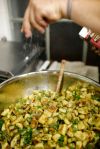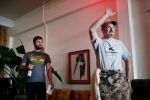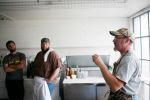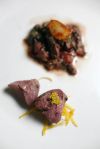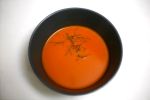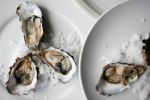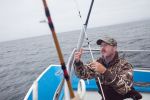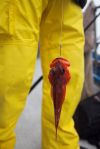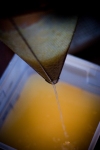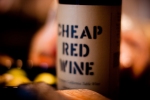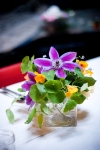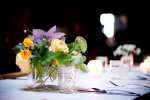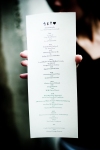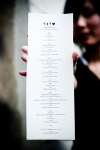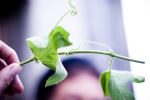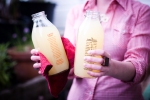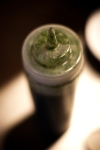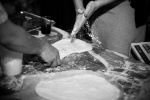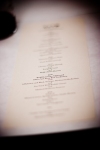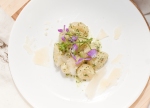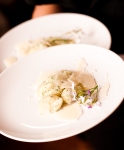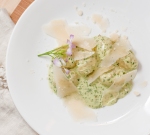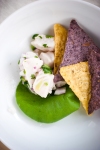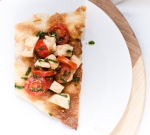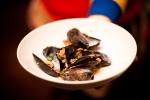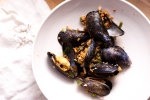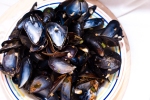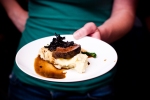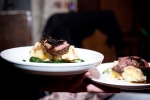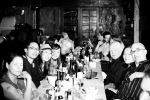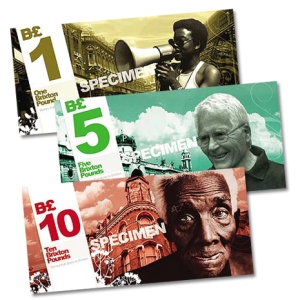My girlfriend Valerie and I just got back from a month long trip to Europe – a land of delicious cheese and keyboards that make typing an inconceivable chore (I mean really, who would design a keyboard where you have to hit alt, command, shift, and 4 to get an @ symbol?). But, despite their lack of tech design genius (or perhaps in spite of it), I had a great time.
- Climbed Sainte-Victoire, the 3,000 ft. mountain that inspired Cezanne for three hours hours one foggy night. White glistening rocks, 500 ft. drop-offs, and heavy packs illuminated by head lamps. At one point we tied ourselves together with a scarf just in case one of us was to fall. It was worth it to camp in a church at the top of the mountain; to drink, play music, and cook raclette in the fireplace.
- Rented the most French apartment I’ve ever seen, complete with a tiny kitchen and the full works of Edith Piaf.

- Ran from tear gas in Lyon as French students fought with the riot police. It exposed us to the French peoples’ distaste for work (the retirement age was recently pushed from 60 to 62, spurring riots that shut down highways, gas stations, airports, and trains).
- Slept in the 2 ft.wide-wide hallway of an overnight train to Alba, Italy, waking up alternately by gesticulating Genovese and grandmothers that seemed to have packed for the apocalypse.
- Bought our first true European truffle, and tried it on everything from mac and cheese to pizza to omelettes to pasta with béchamel (which I liked so much that I made it at the last Underground Market).
- Stood under the Eiffel Tower as it began to flash, and
 realized how much it seems like a spaceship from that angle.
realized how much it seems like a spaceship from that angle.
- Harvested olives in Tuscany until I caught the flu, and walked leisurely like old people through the streets of Tarquenia, stopping at each shop to admire the full legs of procuitto. It was amazing to see them hand slice that stuff, pure artists).
The one thing I didn’t do was update my blog, but I did write (on real paper no less) and will try to post some of it here very soon. For now, I’m happy to be back and getting into the swing of things again.
The first order of duty was to organize two Wild Kitchen dinners, each featuring nine of my favorites dishes from Europe, with a forageSF twist. One of my favorite courses of the night was soup de poisson avec aioli maison de nori sauvage. This dish was inspired by a meal we had in Cassis (a small town in the south of France, from which the crème de’ gets its name). It was exactly what I’d been looking for since I got to Europe: a good meal, perfectly cooked, served simply.
Soupe de poisson is essentially a very flavorful fish stock, served with crostini, spicy aioli, and cheese. The secret is to get an intense rich flavor of seafood and spice. Rather than being “fishy,” it was more of round and full profile. I first imagined was just a reduction of fish stock, with the flavor concentrated by long cooking, but as we worked we discovered it needed more to get it just right.
First we experimented with a simple fish stock, which is nothing more than halibut bones, garlic, carrot, onion, celery, and bay leaf. After cooking for an hour we reduced the liquid by more than half. This gave us a good flavor, but it wasn’t what I was looking for. It tasted like fish, but didn’t have that same richness. We finally found it by adding reduced chicken stock, brandy, oyster liquor and crab “goodies.” If you don’t have those, the stock will still be good, but the fullness they add to the flavor is worth the extra work.
To top it off I made an aioli of wild nori and Sriracha. Nori is a seaweed I collect locally; its similar to the seaweed used to wrap sushi and our local variety grows abundantly up and down the coast. We put the aioli on crostini, added a side of mozzarella cheese, and that was it. A really simple course that was the most popular dish of the night.
Wild Nori Aioli
If you’ve ever made aioli before, it’s the same process, but with addition of chopped nori and Sriracha towards the end. The nori really gives a great layer to the flavor and eating seaweed always makes me feel good. I used nori that I collected during the mid summer when it’s at its peak, and preserved it by cleaning and drying it out. You should try your hand at it too, nori is a great thing to have around to put in soups, and in this case, aioli.
-2 egg yolks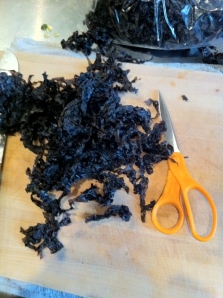
-1 qt. blend oil (a blend of olive and canola) or canola oil
(Pure olive oil has too strong of a taste for aioli.)
-Sriracha hot sauce
-2 cups dried nori (preferably foraged yourself, because its so fun, but don’t feel bad about buying pre-made sheets)
-1/2 clove garlic
-2 tsp. Dijon mustard
-4 tbsp. lemon juice
-Salt/pepper to taste
- Pulse eggs, minced garlic, and lemon juice in food processor.
- Add the oil, a drop at a time until you have an emulsion, and then add the rest of your oil in a slow but steady stream. You know you’re done when your aioli ceases to be liquid eggs, and thickens to become lovely silky mayo.
- Add nori, and Sriracha, and pulse to incorporate. Aioli is really a matter of personal taste, so if you feel it’s too thick, add a drop or two of water, not sharp enough, add some more lemon, and of course salt and pepper to taste…feel free to experiment.
Simple Fish Soup
This is essentially a really rich fish stock, and goes amazingly well with the spicy aioli. And it’s a fun dish to serve and eat: first, you bring out three bowls containing the crostini, aioli, and cheese as well as the pot of the fish stock. Spread aioli on top of three crostini and sprinkle some cheese on top. Lay these pieces in a bowl and ladle fish stock over it until it slightly covers the bread, then eat by spooning the soaked bread in your mouth. Bon appétit!
-5 lb. halibut bones (or other non-oily white fish such as haddock, hake, or sole). Have your fish guy cut them into pieces about the size of your hand.
-1 lb. carrot
-1 lb. celery
-2 lb. onion
-1/2 lb. fennel
-1/2 cup soy sauce
-1 1/2 cups white wine
-1/2 cup brandy
-2 gal chicken stock
-1 bay leaf
-Salt and pepper to taste
– 3 tbsp crab “goodies” (brains and organs from inside a cooked crab)
-1 cup shredded mozzarella cheese
- Add fish bones to a oiled stockpot over medium high, cook about 15 minutes until caramelized.
- Add rough chopped veggies, brandy, wine, chicken stock, bay leaf, and soy and bring to a boil.
- Turn down to a simmer as soon as it boils and cook on low heat for 4 hours.
- You’ll know its done when you taste the rich flavors of the stocks coming together. Strain everything through a cheesecloth lined strainer.
- Return the soup to the pot and cook it over medium-high heat until it has reduced by half, about an hour.
- Serve with sides of crostini, aioli, and mozzarella cheese. You can’t miss with these flavors.
So the trip was great! We ate good food, met good people, and had some adventures, but it’s nice to be back.
Iso
Recipes by Iso Rabins and Jordan Grosser
photos by Valerie Luu
Posted in Uncategorized
Tags: aioli, fish soup, fish stock, foragesf, iso rabins, nori, wild food, wild foraged

